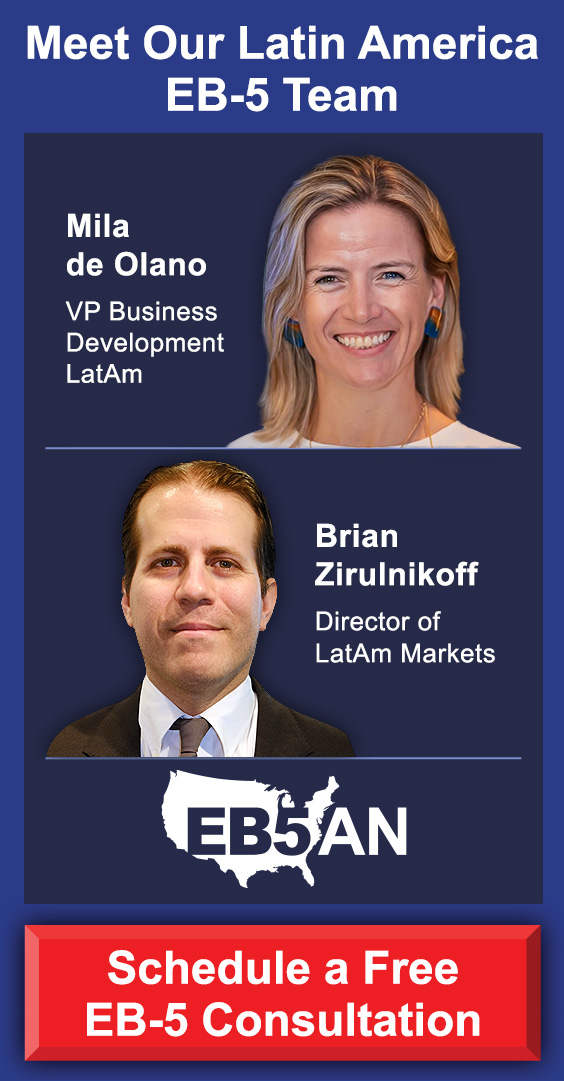For foreign nationals looking to gain U.S. permanent residency through the EB-5 Immigrant Investor Program, understanding the source of funds requirement is critical.
While the EB-5 program may seem straightforward—you invest capital in a qualified U.S. new commercial enterprise and create jobs in return for a Green Card—the process involves significant documentation. Chief among these documentary requirements is proving that your investment funds were obtained lawfully.
This requirement often creates confusion for investors. In this article, we’ll explain source of funds in simple terms, demystify the documentation process, and offer practical guidance on how to prepare your EB-5 petition.
Understanding the Source of Funds Requirement
What USCIS Is Looking For
Common Lawful Sources of EB-5 Funds
The Path of Funds
Source of Funds Is Not One-Size-Fits-All
The Role of Professional Advisors
Building a Strong Foundation With EB5AN
Understanding the Source of Funds Requirement
The United States Citizenship and Immigration Services (USCIS) requires every EB-5 investor to demonstrate that their investment capital was obtained through legal means. You cannot simply invest the required funds; you must also clearly show how you earned or acquired them.
This step exists to ensure compliance with anti-money laundering laws and to verify that the capital investment does not stem from illicit activities. In other words, it’s a matter of national security, economic integrity, and immigration transparency.
What USCIS Is Looking For
USCIS evaluates source of funds documentation for two primary purposes: lawful origin and traceability.
Lawful Origin
The agency must be satisfied that the funds came from legitimate activities, such as employment, business income, investments, inheritance, or gifts, and not from criminal enterprises, corruption, or other prohibited sources.
Traceability
The full path of the funds, from their original source to the final transfer into the EB-5 project, must be documented and traceable through a clear financial trail.
This process can feel intrusive or excessive, especially for individuals from countries with less formal financial reporting systems. Nevertheless, a strong and well-prepared documentation package is essential to avoid delays or denials.
Common Lawful Sources of EB-5 Funds
While the law does not limit the types of acceptable sources, some are more common and more straightforward to document than others. These include personal earnings, business profits, sale of property, loans secured by personal assets, gifts, and inheritances.
For instance, if your investment capital comes from years of employment, you’ll need to present tax returns, pay slips, bank statements, and employment verification. If your funds come from selling property, you’ll need to document not only the sale but also how the property was originally acquired and financed.
While loans and gifts are also allowed under EB-5 rules, they must meet specific conditions. A personal loan must be secured by your own assets, not those of the EB-5 enterprise, and gifted funds must include evidence that the donor lawfully earned the money as well as a notarized gift declaration.
In short, what matters is not just the current availability of the funds, but the transparency of the money trail. That is why, all things being equal, the best source of funds to choose is often the one with the simplest path of funds to trace.
The Path of Funds
In addition to documenting the lawful source of your EB-5 investment capital, USCIS also requires a clear explanation of the path of funds, or the route the money takes from its origin to the EB-5 investment account.
This step is crucial, because even if your funds are legally earned, your petition could be denied if you cannot show how they were transferred and handled.
The path of funds should demonstrate an unbroken chain of custody for the investment amount. For example, if you earned your money from business profits, sold a property, or received a gift, you must show not only how you acquired the funds, but also how they moved through financial institutions and ultimately arrived in the EB-5 project’s designated account (such as an escrow or new commercial enterprise account).
This typically involves multiple document types due to the multiple steps involved. Some of the most common document types include the following:
- Bank transfer records showing funds moving from your personal account to an intermediary (if any), and then to the EB-5 project
- Currency exchange records, if applicable, including proof of conversion rates and compliance with local financial regulations
- Receipts or confirmations from the receiving U.S. bank or escrow agent acknowledging the deposit
- Explanatory declarations if the movement involves multiple steps, intermediaries, or accounts held by family or business associates
Any unexplained gaps or irregularities—such as large cash deposits, unclear third-party involvement, or unexplained foreign transactions—may raise questions. It’s best to keep the money trail simple, direct, and well-documented.
In short, think of the path of funds as a financial timeline that complements your source documentation. Together, they form the full picture USCIS needs to approve your investment petition.
Building a Clear Paper Trail
One of the most important aspects of a successful EB-5 petition is coherently documenting the movement of funds. USCIS expects a seamless narrative, supported by verifiable records, showing how the money traveled from its origin to the EB-5 investment account.
Depending on which type(s) of source of funds you use, this may require combining several types of records, with the following list outlining the most common:
- Bank statements that reflect deposits and transfers over time.
- Tax returns that support claims of income or business activity.
- Contracts and agreements related to property sales, loans, or business investments.
- Legal declarations to explain transactions, especially if something unusual occurred, like a transfer between family members or across multiple currencies.
Where documents are not in English, certified translations must be provided.
Moreover, consistency across all records is crucial. Even small discrepancies can trigger a request for evidence (RFE) or notice of intent to deny (NOID), which could delay your petition or put your application at risk.
Thankfully for more recent and prospective investors, a recent court ruling has made the requirements around this paper trail slightly more relaxed: In late 2024, in the Battineni v. Mayorkas case, a federal court found that as long as the investor can prove that their money has been lawfully obtained, they do not need to show an exact, detailed trail of every transaction leading to the investment.
While it is still crucial for investors to clearly outline their path of funds, this decision has made doing so less challenging.
Source of Funds Is Not One-Size-Fits-All
Every investor’s financial background is different. Some may draw from a single source like salary savings, while others may combine multiple sources, such as business profits, property sales, and inherited funds. USCIS allows for such combinations, but each source must still be independently legal and properly documented.
In countries with informal economies, limited banking infrastructure, or underdeveloped tax systems, investors may find it difficult to provide Western-style documentation. In these cases, additional affidavits, expert opinions, or historical records may be necessary to establish the legitimacy of the funds.
This is why it’s important to start preparing your source of funds documentation early in the EB-5 process, ideally well before making your investment.
The Role of Professional Advisors
Given the complexity and importance of source of funds documentation, most EB-5 applicants work closely with an immigration attorney experienced in EB-5 cases like theirs. A qualified lawyer can help identify which sources are easiest to document, spot potential red flags, and guide you in assembling a compliant and persuasive application.
In some cases, your attorney may work alongside several other professionals to ensure your petition is as comprehensive and airtight as possible. They may, for instance, work with accountants to prepare or verify financial statements, foreign legal experts to explain local financial or legal norms, and bankers to obtain certified statements and documentation of transfers.
This collaboration between these professionals ensures that your petition is not only factually accurate but also presented in a way that meets USCIS expectations.
Building a Strong Foundation With EB5AN
The EB-5 source of funds requirement may seem burdensome, especially for prospective investors. But it is an essential part of the program’s integrity, as it confirms that U.S. residency is granted only to those who have obtained their investment capital through legal and verifiable means.
For new investors, the best strategy is to prepare early, stay organized, and work with professionals who understand the legal and financial nuances of the EB-5 program. With proper planning, your source of funds documentation can be a strong foundation in, not an obstacle to, your journey to U.S. residency.
EB5AN has helped more than 2,700 families from 70+ countries become lawful permanent residents of the United States. Our team has more than a decade of experience, and we offer our clients first-rate, low-risk EB-5 regional center projects with a 100% USCIS project approval rate.
If you would like to know more about your EB-5 investment options, book a free call with our expert team today.











